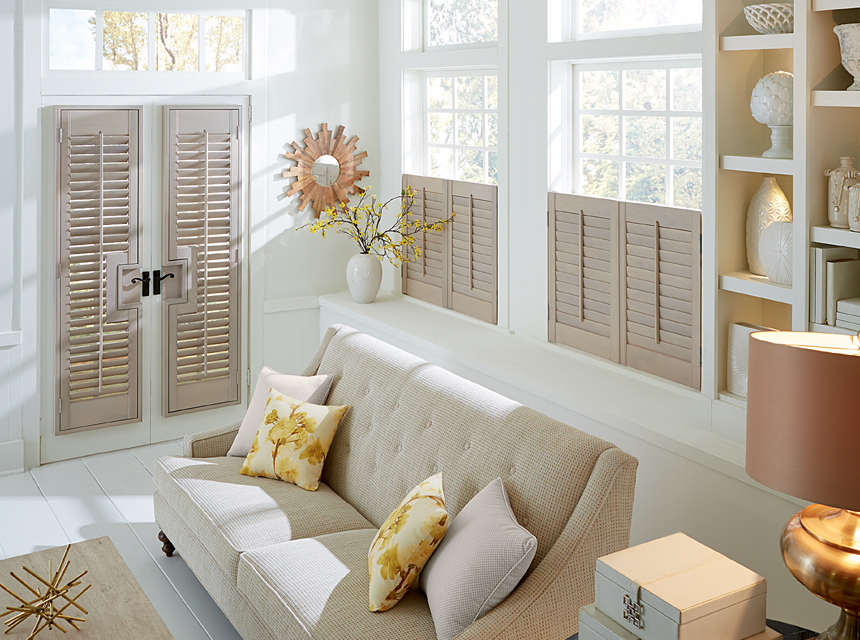Making the choice to go with wooden blinds is an easy one. Wood blinds work excellently with any style of room and add a natural charm and grace to any living area. They can come in a variety of natural and painted colors, with stains adding to their finished look and appeal. From deep rich browns to rustic reds, wooden blinds fit any style of modern, traditional, or contemporary room. From there though, comes the choice between whether a natural wooden blind would work best, or a faux wood blind would fit the area better.
‘Faux’ means an imitation or artificial version of something. Faux wood blinds are blinds made to look like normal and natural wood. Most are made of either a composite wood material, or PVC/vinyl material. While both wood blinds and faux wood blind are made of slats of material, faux wood uses PVC/vinyl slats or a composite coated wooden core slat. What does this mean for the blind? Faux wood is much tougher than natural wood, easily weathering difficult situations that the natural wood might not be able to. They are not going to warp or crack in the same way as wooden blinds, making them excellent choices for rooms that have a high frequency of steam, small children, or large animals. A bathroom or children’s bedroom or playroom is an excellent way to use these blinds to great effect. A well used kitchen is also a great area to use faux wood blinds in. You also don’t have to worry about damaging them with harmful cleaning agents, faux wood can be cleaned with any cleaning solution. However, Faux wood is heavier and bulkier than its natural neighbor, meaning that it takes up more space at the top of the window. Larger windows might also make it harder to raise and lower the blind precisely, because of this weight.
Natural wood on the other hand is lighter, has an air of sophistication and grace to it that faux wood finds difficult to copy. The nature of real wood makes it more expensive and harder to maintain, but many swear by the organic counterpart for its ability to add elegance to a living space. The patina of natural wood cannot be copied easily, a cultured look that is both modern and traditional in all the right ways. While more expensive and needing a better eye for maintenance, this material is like a finely crafted piece of handmade furniture or art piece. It’s worth it in how it shapes the room. Real wood blinds work very well with any style or stain of wood trim and art deco. They add a warmth to the area, and their lightness allows for covering larger windows much easier than faux wood could.
Regardless of choice, wooden blinds are an elegant and delighted answer to any home. Bringing a piece of the outside natural world into a living room, bedroom, or bathroom increases the sophistication and charm of the space. While faux wood is less expensive than real wood, natural wood has charms and qualities not easily overlooked in the modern American home. Neither possibility is strictly better than the other, and many factors should be taken into account when deciding on what works best not only for the house and home, but for you.



